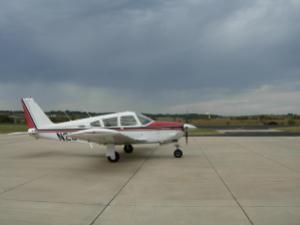I rarely dream about flying, but I did last night.
I seem to have a propensity for thinking about flying. I’ve written about flying hybrids, as in James Patterson’s Maximum Ride series about a flock of flying kids, which is, as I’ve said before, “some of the most interesting reading a bird man (aka aviator, pilot) is likely to find in an airport bookstore.”
 I’ve written about flying whales, and I’ve written about flying airplanes. But until now I haven’t written about flying dreams.
I’ve written about flying whales, and I’ve written about flying airplanes. But until now I haven’t written about flying dreams.
One reason is simple: no one wants to hear about other people’s dreams. But flying dreams are part of our collective experience. Everyone has them at some point, usually when young. As I grow older I find them occurring less frequently, and therefore find them all the more enjoyable for their rarity.

Last night my arms were initially wings, but I quickly realized that I lacked the strength to fly with wings like a bird, or like Maximum Ride. I solved that problem by reverting back to my old dream style, flying with outspread arms, effortlessly.
I was standing on a 3rd story window ledge in a home where a young boy was close by, and I accidentally knocked a small pumpkin sitting on that ledge to the ground. It splattered.
Feeling some sense of responsibility for the child’s welfare, I told him not to try what I was about to do, for his head would splatter like the pumpkin. And then I stepped off the ledge and flew.
It was foggy, but instinctively I knew how to get where I was going, without aid of charts or GPS. I knew I could navigate based on some primordial signal in my brain, like a migrating bird.
It was wonderful.
It was undoubtedly a lucid dream because I was aware of a certain biological need that I consciously resisted because I did not want to break out of the dream. I knew I would never regain the dream once it was broken.
The strangest flying dream I had was only seconds long but memorable. I was viewing a glass city, with tall glass spires reaching far into the sky. It was clearly not of this earth, and I can’t swear that I was even human. But I launched myself from near the top of one of those tall glass buildings, and swooped downward, gaining speed, then glided on without effort, like an eagle.
In my college days I told my roommate about a flying dream where I was trapped underneath trolley lines in Atlanta (yes, they used to have electric trolleys downtown in the 60’s) and he found that amusing, but I did not. It was peculiar, but frustrating.
Reportedly it’s common to encounter barriers like electrical wires, and this time I sure enough found those blocking my way at one point, but unlike before I was able to ascend vertically till free of them, then continue on my way.
Sigmund Freud made much ado about dream interpretation, and would no doubt see physical barriers in flying dreams as symbols of psychological barriers existing in the dreamer’s waking world. But the fact that flying dreams are so common, even archetypal in a Jungian sense, and typically so enjoyable, makes me wonder if they might be more than some complex mental fiction that requires a highly paid professional to interpret. Perhaps they are nothing more than memories.
While you digest that thought, I suggest you enjoy the wonderful flying sequence below, generated by a computer game. For full effect, play it in high definition and full screen.










